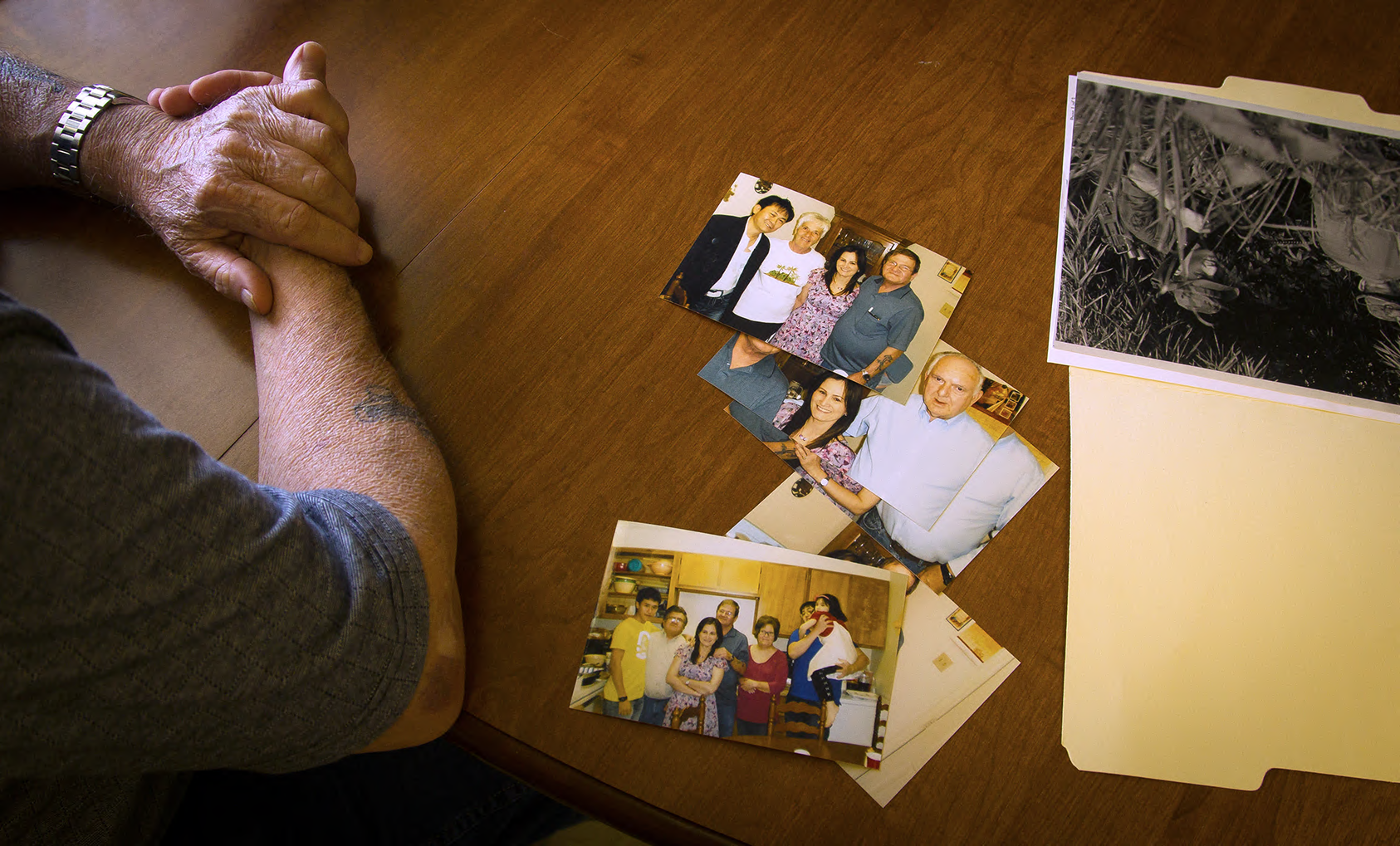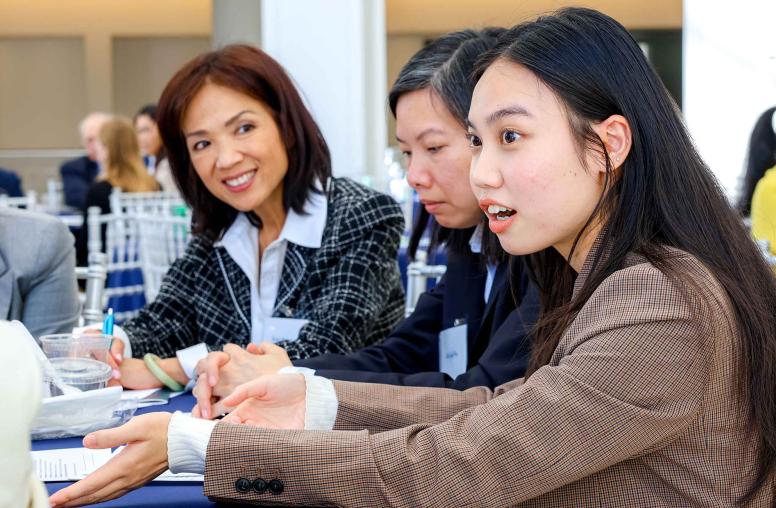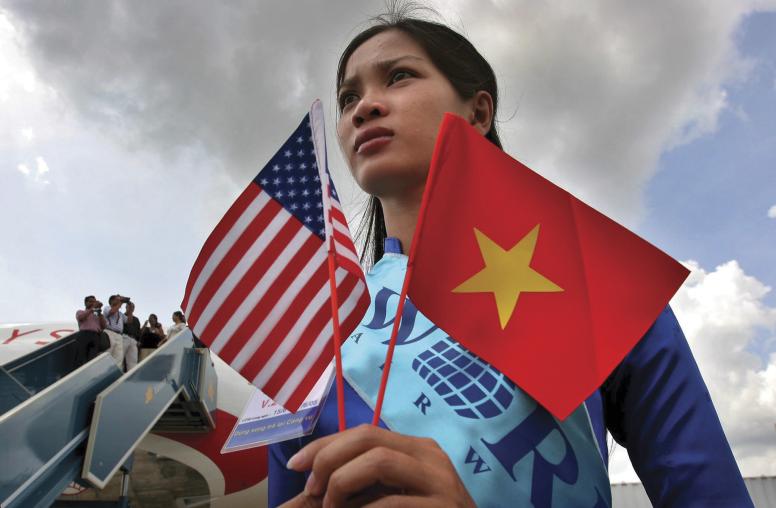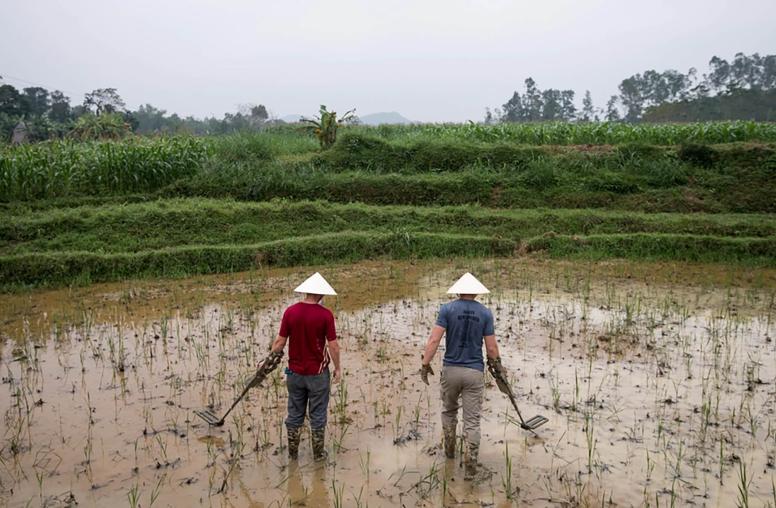Transforming the Legacy of Children Born of War in Vietnam
Now adults, Amerasians and adoptees from the Vietnam War point to reconciliation by reclaiming their origins and reframing their narratives.
During and after the Vietnam War, up to 500,000 “children of war” were born to foreign soldiers and local women in Vietnam. Amerasians — children of war fathered by U.S. soldiers — and adoptees raised abroad are now reclaiming their narratives and healing journeys.

Media around adoption often portrays all-American children, adoptive families overcoming great distances to be together and Amerasian children escaping war or poverty. While many adoptees appreciate parts of their adoption, their origins reveal lasting legacies of conflict, including birth family separation, mixed-race stigmatization and integration challenges after early immigration. Their narratives also offer insights into a journey toward reconciliation.
Life Beyond the Headlines: Buried Dynamics in Their Birth Country
War often obscures the past for children growing up amid conflict and its aftermath. Literature, documentaries and memoirs play a pivotal role in bringing these hidden stories to the forefront, especially with a dearth of data of this group’s status and needs. Nguyễn Phan Quế Mai’s novel “Dust Child” traces the life journey of Nguyễn Tấn Phong, the child of a Black American soldier and a Vietnamese mother. Although the story is fictional, Quế Mai’s extensive work with veterans, war victims and children informs her complex portrayal of Phong, women working in wartime Saigon and U.S. servicemen.
Phong, like many Amerasians in Vietnam, grapples with poverty and the stigma placed on his mixed-race background. He is abandoned as a baby, lives in an orphanage and then spends years sleeping on the streets until he saves enough to support himself. While he paves his path and builds a family of his own, his journey is fraught with questions of belonging. He also faces barriers to making sense of U.S. policy designed to permit Amerasians and their families to immigrate to the United States.
Stories like Phong’s are important to reveal the discrimination and violence children of war face from the start. These living legacies of war persist past their departure from war environments.
During the exodus of Vietnamese refugees after 1975, families grappled with the heart-wrenching decision of whether to send their children abroad. Many fathers’ decisions to abandon their children were influenced by war trauma; and many mothers saw abandonment as the only way to ensure a better life. Amid wartime tensions, it was also common for mothers of Amerasians to destroy evidence such as photographs linking them to Americans. This complicated family reunions for children and their fathers who later searched for one another.
Life Beyond War: Ongoing Challenges
Adding to around 1,000 previous adoptions out of Vietnam, Operation Babylift became one of the most prominent evacuations of children just before the end of the Vietnam War in April 1975. The operation, funded by a $2 million U.S. government children’s fund, transported about 2,000 children to the United States and 1,300 to Canada, Europe and Australia across 30 international flights, despite a deadly crash that killed 138 on the first flight.
One Babylift passenger, Heidi Bub (originally Mai Thị Hiệp), adopted at age seven, later recounted her confusion as her birth mother left her. This raises questions about parental consent for sending children abroad. There was a “wealth of eye witness [sic] testimony” indicating insufficient documentation and understanding of parental consent, where families of several Babylift children did not agree to adoption, wrote Helen Jacobus, a volunteer with the Ockenden Venture, a refugee charity. “Daughter from Danang” became a notable 2002 documentary illustrating one adoptee’s journey back to her birth family in Vietnam.
Moving beyond narratives framed by others, adoptee-authored works have reclaimed narratives of loss, identity, community and return on their own terms. Such works include the photobook “Other Streets: Scenes from a Life in Vietnam Not Lived” by Mark F. Erickson and the “Intersections” docuseries featuring four adoptees from Đà Nẵng. The author Kevin Minh Allen writes about the controversy of Operation Babylift and draws parallels between the experiences of children born of war in Korea and Vietnam. More privately, adoptees and Amerasians reclaim community and offer mutual support in private social media groups like 1st Gen of Vietnamese Adoptees.
As these works suggest, humanitarian policies delivered children of war from a direct wartime environment but often fell short of addressing their past and ongoing developmental, legal and emotional needs. While many adoptees express gratitude for their “second chance” at a stable life facilitated by adoption, they still grapple with integration from cultural limbo. Amerasians face enduring discrimination and questions of belonging between parent nations and cultures due to intersecting dynamics of armed conflict, family separation and inadequate child protection. Even decades after adoption, many adoptees and birth families have little or no knowledge of one another.
Blurred Lines: Legacies of War Span Families and Societies
Policies affecting children born of war blur the lines between public and private loss, impacting reconciliation at both societal and familial levels. While personal legacies of war are widely recognized, family separation also brings profound societal losses across generations and national borders.
Vietnamese children born of war give instances where adoptions, even when carried out as intended, disrupt the senses of security, belonging and identity for adoptees and their families. Despite international law protecting children’s right to access their origins, including their family relations, adopted children born of war remain unable to access information about their birth and identity. In 2013, 38 years after the end of the war, Vietnam signed an international set of guidelines for the protection of adopted children and their right to origins. Yet there remains ample room for improving post-conflict support by governments and communities.
In light of these nuances, organizations led by adopted children of war have taken the initiative to reshape their narratives and take charge of their own healing and community-building. For example, Operation Reunite, the Vietnamese Adoptee Network and the SEAcoast2Coast Foundation work toward reunion, healing and reconciliation for Vietnamese adoptees and Amerasians, as well as families and veterans. Other adoptee organizations find solidarity across adoptee groups, including IAMAdoptee, which curates mental health and wellness resources, and Intercountry Adoptee Voices, which seeks to galvanize adoptee voices around the world. Reconciliation appears differently in various group missions, from family reunion and story-sharing to advocacy for the rights of adoptees and original families. All work to shape the legacies these adoptees hope to leave for one another.
Conclusion
Beyond the humanitarian impulse that initially brought them to the United States toward the end of the Vietnam War, Amerasians and adopted children born of war, now adults, offer valuable leadership and guidance on reconciliation that empowers families affected by war. Their experiences emphasize the need for reunion opportunities, community and access to their origins.
Meaningful reconciliation would allow for complex understandings of adoption. U.S. and Vietnamese governments can support children born of war by granting access to adoptees’ official birth and adoption records, employing DNA testing for family reunions, providing immigration support and offering mental health support services. These resources serve as vital bridges for adoptees and their birth families seeking to reestablish connections with one another and their own pasts.
By actively listening to their stories and supporting their efforts to bring about change, the United States and other nations can move closer to reconciling with children and families affected by conflicts around the world.
Mahli Knutson was adopted from China and is a graduate of the Harvard Kennedy School’s Master’s in Public Policy program and Middlebury College. She works to connect adoptees across generations and countries through writing and by volunteering with China’s Children International.



